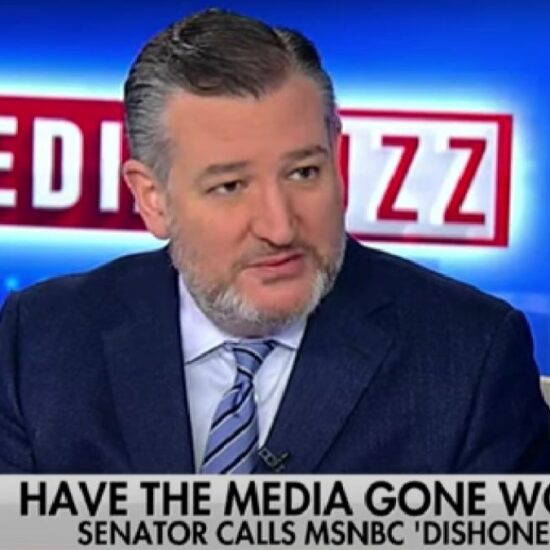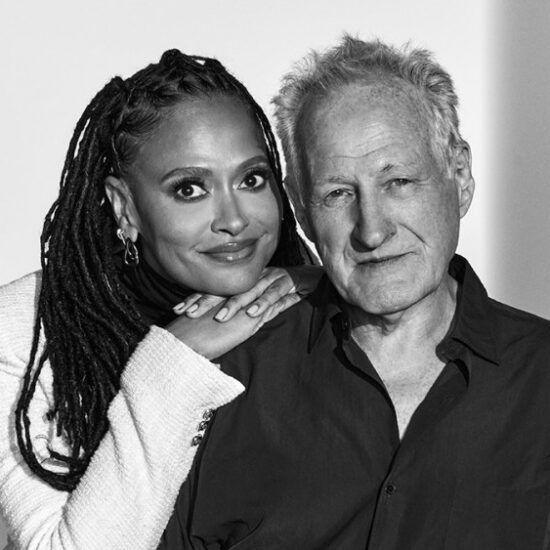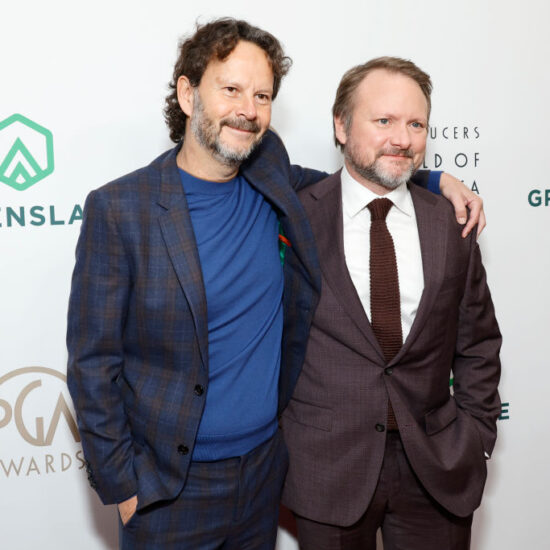
The Anti-Defamation League, a nonprofit focused on antisemitism, received an unusual invitation from YouTube in early 2017: come meet our biggest influencer. The ADL agreed, and its staff logged onto a video conference call with YouTube’s policy chief, Juniper Downs, and the platform’s biggest star: Felix Kjellberg aka PewDiePie.
The megastar’s career was imploding.
PewDiePie had become famous over the past seven publishing video game play, mastering the YouTube artform and netting more subscribers than anyone on the platform. More recently, he enjoyed wading into the meme culture and edgelord humor that accompanied Donald Trump’s ascent. That February, shortly before the ADL meeting, The Wall Street Journal published a damning story on the fandom of PewDiePie’s new shtick in neo-Nazi circles, highlighting Kjellberg videos with Hitler salutes and Nazi imagery, and one where the YouTuber paid two men to unfurl a banner reading, DEATH TO ALL JEWS. Kjellberg replied that these were clearly jokes, content “trying to show how crazy the modern world is.”
Disney, which owned a digital network that contracted with Kjellberg, decided within days to drop PewDiePie after being alerted by the Journal.
“They moved too slowly and ineffectively.”
YouTube, however, moved less swiftly. PewDiePie had fiercely loyal fans and embodied the irreverent, freewheeling spirit many YouTubers held dear. Google’s video division had certainly seen creators misbehave or court controversy before, but it had no protocols in place for a mess this big. For years, YouTube had kept creators at arm’s length, letting networks, agents, or YouTubers themselves deal with firestorms. Yet, starting in 2014, YouTube rushed to embrace the commercial potential of its creator class, funding a slate of original programs featuring YouTubers. Kjellberg’s show, Scare PewDiePie, was in the first batch.
He was filming the second season when the Journal story hit. Initially, YouTube defended the star, arguing to the newspaper that Kjellberg was known for pushing the envelope. But the controversy didn’t end and a flurry of news outlets picked up on the story. Only then did YouTube reverse course, canceling Scare PewDiePie and pulling Kjellberg from its premium advertising tier. Publicly, the company said little else.
Privately, Susanne Daniels, a former MTV executive that ran its Originals program, expressed frustration with Kjellberg’s antics and the delay YouTube took in acting. “They moved too slowly and ineffectively,” she recalled years later.
YouTube did quietly attempt to salvage any damage to its brand with the ADL summit. During the call, ADL staff explained that the extremists they tracked used antisemitic humor online to justify real violence, an simply casting such material as memes disavowed any responsibility. The organization suggested Kjellberg make a public donation or apology to Jewish groups, perhaps a video about tolerance.
One person on the call remembered Kjellberg staying mostly silent, like a bored schoolboy at the principal’s office. Nothing came of the meeting.
Around 2014, as YouTube began to invest more deeply in creators, the company developed a classification system for its stable of stars. Either they followed the SNL model, using YouTube to springboard into TV or film, or they took the Oprah path, building empires of fervent audiences right on YouTube.
PewDiePie was one of the best Oprahs. He lived and breathed YouTube. Kjellberg worked with Maker Studios, a network founded to let YouTubers flourish free of the shackles of Hollywood agents, producers, and scripts. After Maker signed Kjellberg, the company threw him a party in Los Angeles to celebrate PewDiePie crossing three million subscribers. They had to tear up the invites twice because his channel grew so fast. (Ultimately, the party celebrated six million subscribers.) Comedy Central came calling with an offer to bring PewDiePie to TV, but Kjellberg declined. He preferred YouTube.
In 2014, Disney paid more than $600 million for Maker, giving a stamp of validity to the nascent online creator economy. Kjellberg, normally press shy, sat for an interview with the Journal and posed wearing a flower crown. “It’s cool to have this kind of influence,” he said, “but at the same time it’s kind of scary.” Still, the headline irked him: “YouTube’s Biggest Draw Plays Games, Earns $4 Million a Year.” Rubbernecking at just how much YouTubers earned felt disrespectful. Much of traditional media treated YouTubers as novelty acts, even if they pulled in bigger audiences than TV. When the early YouTube phenom MysteryGuitarMan appeared on CNN, Sarah Penna, his manager and spouse, told producers not to ask how much money he made. No one asked George Clooney that. CNN still did.
This sort of attention certainly pleased YouTube
In 2015, Kjellberg appeared on The Late Show with Stephen Colbert. The Swede wore a crisp blue suit, slicked-back hair, and a genuinely nervous look. “I want to thank the internet for letting their emperor be here for the evening,” the TV host began, before asking Kjellberg to explain why people watched him play video games. “I have the best job in the world,” Kjellberg replied. Colbert reminded viewers that Kjellberg made an amount the prior year “that rhymes with schmeven schmillion dollars.”
YouTube never acknowledged it, but this sort of attention certainly pleased the company. Just a few years earlier no one had seen it as a viable business, let alone a home for professional media. Now here was a YouTuber with a schmeven-schmillion-dollar career. PewDiePie was a gifted performance artist, the embodiment of a new media. YouTube placed posters of him around its office and included him in a small cadre of stars that would receive dedicated business managers at YouTube. Once, when European officials were grilling Google about the prevalance of terrorist content on YouTube, a Googler higher-up proposed that regulators support the creation of anti-terrorism videos, and suggested working with PewDiePie to do so. (That never happened.) In 2015, Kjellberg appeared in “YouTube Rewind,” a schmaltzy year-in-review video the company made, to give his signature bro-fist bump to the company logo.
By the next year, the love affair was over.
Kjellberg appeared in a scruffy beard in a video in December of 2016 to rant about YouTube. “I feel like YouTube is a toddler playing with knives,” he griped. “Let’s just take the knife away from that baby!” He complained about comments and a malfunction keeping subscribers from seeing his videos. He threatened to quit. This was, in fact, a promotional stunt for his Originals show. But the content grind had worn him thin. He was filming for Scare PewDiePie, his own channel, and Revelmode, a gaming network he had started with Maker and other creators. Later, Kjellberg would tell fans that he developed a daily whiskey-drinking habit to cope with the stress. A person who worked with him described the months before the holidays in 2016 the “darkest” they had seen.
Some of his gripes in the video had merit. A glitch had screwed up the way YouTube showed subscribers videos, but the company didn’t bother to tell anyone. YouTube was also trying to expand its audience beyond hardcore YouTuber fanboys (the platform skewed mostly to male viewers), so it began tilting algorithms to favor videos that drew daily viewers, higher engagement (more likes and comments) and cleaner “ad-friendly” fare. This tended to give late-night TV and big media an upper hand over regular YouTubers.
No one searched for poop candy or ways to drink piss
Kjellberg’s response was to tilt PewDiePie further in the other direction. He produced vlogs that mixed earnest schmaltz (video title: “ANNIVERSARY!”) with inanity (“DRINKING PISS FOR VIEWS,” “I TRY POOP CANDY!” “I’M SO DONE”), displaying a disregard for YouTube’s algorithmic logic. (No one searched for poop candy or ways to drink piss.) He mocked boorish YouTubers, filming one video flailing around his house shirtless, shouting “Smash that Like button!” For a brief moment while assuming this histrionic character, he threw up what looked like a Nazi salute.
Kjellberg embraced edgelords, a web subculture of touching taboo topics to make some point or simply because they could. He reviewed “dank memes” and the topsy-turvy viral internet of Trump’s candidacy. “YouTube at that time was at a place where no one really knew where the limit was,” Kjellberg later told The New York Times. “A lot of channels were just pushing it as far as possible because there were no restrictions at the time.” Kjellberg worshipped South Park, a show with a running gag about a Jewish character that managed (debatably) to satirize cultural undercurrents of antisemitism. One person who worked with Kjellberg recalled how he would often tease them in person for being Jewish.
Yet many close to Kjellberg insisted that he had no animosity or hateful beliefs. They describe him as steadfastly loyal to his YouTube audience. (One person called him “a little spectrumy” in this monomania.) “He’s a very kind person,” said David Sievers, the early Maker Studios official. “Like many artists, he has an art. And like comedians who are practicing an art, not everyone gets it.”
At first, YouTube seemed fine with his art that tested the limits of the internet’s absurdity. In January 2017, PewDiePie began paying freelancers on Fiverr, a gig-worker-for-hire site, and capturing the results on film. In one video, he hired “Funny Guys,” two young men from rural India, to pull of a stunt about Jewish genocide. Kjellberg filmed his reaction in real-time. “It was a funny meme,” he said on camera. “I didn’t think it would work.”
PewDiePie “underestimated the responsibility he had as the platform’s most popular ambassador”
Within weeks, a still frame from the video appeared in the Journal, he would be dropped by Disney, and YouTube had canceled the second season of his show. YouTube would go on to remove that footage but not others that the neo-Nazi website The Daily Stormer had praised as coded fascism. At the time, YouTube explained that videos “intended to be provocative or satirical” were allowed while those inciting violence or hatred were not. YouTube representatives did not detail how it distinguished between the two. For many at YouTube, this line was never clear.
In a follow-up video, PewDiePie assigned blame on the newspaper, not Disney or YouTube. “Old-school media,” he told his audience, “does not like internet personalities because they’re scared of us.” (Kjellberg would delete this video after the Journal reporters were bombarded with threats.) Employees at YouTube were well aware that PewDiePie’s provocations scared people for a different reason — a social media star was fueling, unwittingly or not, a hateful brand of politics on the rise. But the company didn’t want to address this directly. The closest it came was in a book published later in 2017 from Robert Kyncl, YouTube’s chief business officer. Kjellberg, Kyncl wrote, “underestimated the responsibility he had as the platform’s most popular ambassador, even if he himself is not a hateful person.” He compared the episode to Ted Danson’s blackface routine from 1993.
Others who worked at YouTube attributed its reluctance to a corporate culture that prized caution and consensus over decisiveness. “It’s ridiculous. Everyone needs to agree,” recalled Daniels, the former executive who left earlier this year. “It’s a company that was not and still isn’t wholly prepared to react to the potential negative consequences of hosting an open platform.”
The rest of 2017 would only get worse for YouTube. A month after the PewDiePie incidents, advertisers began boycotting YouTube over extremist videos. Just as YouTube coaxed them back, another scandal erupted over troubling, traumatizing content aimed at kids, pushing advertisers to flee again. On the last day of 2017, YouTube influencer Logan Paul filmed a dead body hanging in Japan.
Graham Bennett, Paul’s manager at YouTube, was on holiday when Paul’s video appeared on the company’s Trending page. The ten-year YouTube veteran later described that moment as “the scariest time” in his career. “It seems kind of naive now, but it was the first time we realized that YouTube creators were legit global stars,” Bennett confessed a few years later. “And that meant that if they did something out of line or crazy and newsworthy, it will be news everywhere in the world.” YouTube would soon tighten rules for monetization and behavior off its platform, an attempt to tame irascible creators. YouTube declined to comment for this story.
An internal document soon circulated inside YouTube about PewDiePie
Kjellberg, meanwhile, had gone wilder on-screen. He started a new format, “Pew News,” riffing on media critics and fellow YouTubers, raging like Network’s Howard Beale. He grew his beard out to Tolkien-dwarf length. He dropped the n-word on a video game livestream off YouTube, prompting an apology, on YouTube (“I’m an idiot”), and another critical news cycle. In one “Pew News” clip, he dissected Logan Paul’s apology tour: after his Japanese forest debacle, Paul went on daytime TV and made a doe-eyed video on suicidality. People had advised Kjellberg to do the same, but that felt “very disingenuous,” he told viewers. “I would rather just show people that I’ve changed through my videos and time.” Representatives for Kjellberg didn’t respond to requests for comment.
While YouTube still ran ads on PewDiePie’s channel, it kept him out of its premium tier and promotional efforts. Still, this didn’t seem to dent his audience. By the fall of 2018 PewDiePie had more than sixty million subscribers, fans whose loyalties had cemented during his publicity woes. When T-Series, an enormous Bollywood channel, looked poised to take the YouTube subscriber crown in the summer of 2018, fans and fellow YouTubers rallied around Kjellberg, starting a viral meme — “Subscribe to PewDiePie!” — that ricocheted around the world. His popularity surged.
The company’s willful detachment from its biggest star looked untenable.
An internal document soon circulated inside YouTube about PewDiePie. In it, Ina Fuchs, Kjellberg’s partner manager, made the case for a closer corporate tie. Fuchs praised his newfound success with meme reviews, listing his collaborations with “top creators” “such as jacksepticeye and Elon Musk.” (Musk, the Tesla CEO, appeared often on YouTube but did not have a channel.) It favorably mentioned how Kjellberg inveighed against Europe’s copyright measure, a top priority for YouTube then. It also listed his metrics: in a seven-year stretch, PewDiePie’s videos were watched for more than 130 billion minutes, earning him over $38 million from YouTube. The star, the document read, wanted the company “to recognize him more again since he feels that he has been publicly ignored.” Susan Wojcicki, YouTube’s chief executive, was convinced and ordered her marketing team to find ways to “re-engage” with the creator.
After a terrorist in Christchurch used the “subscribe to PewDiePie” rallying cry, Kjellberg called for the meme’s end and decried the “unspeakably vile” mass shooting. YouTube felt he handled the tragedy well. Staffers had drafted a series of plans to brace for any backlash once T-Series toppled PewDiePie in subscribers, but it happened that May without incident. PewDiePie was well behaved.
On July 25th, 2019, YouTube invited Kjellberg and eleven other European creators to London’s Victoria and Albert Museum, for a private reception and tour of a Christian Dior exhibit. Wojcicki flew in. The advanced schedule listed the following meeting from 5:00 to 5:30PM: “Susan and PewDiePie.”
In the months that followed, Kjellberg would stay out of headlines. He started bleeping out profanities in his videos and even posted footage playing Minecraft, a return to his earliest form. By the next spring, he would sign a contract with YouTube for gaming livestreams with little fanfare, his first official business tie with Google in more than three years. Back in the fold.
This story was adapted from LIKE, COMMENT, SUBSCRIBE by Mark Bergen, published by Viking, an imprint of Penguin Publishing Group, a division of Penguin Random House, LLC. Copyright © 2022 by Mark Bergen.













